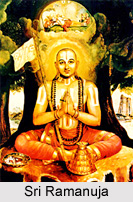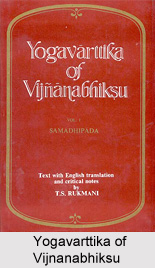 Philosophy in India is essentially spiritual. It is the intense spirituality of India and not only great political structure or social organisation that it has developed that has enabled philosophy to resist the ravages of time and accidents of history. The history of Indian thought illustrates the endless quest of the mind, ever old, ever new. Indian philosophy taps its interest in the haunts of men and not in `supra-lunar solitudes`. The founders of Indian philosophy, as history illustrates, had strived for a socio-spiritual reformation of the country. When the Indian civilisation is called a Brahmanical one, it only means that its main character and dominating motives are shaped by its philosophical thinkers and religious minds. Indian philosophy has had a prolonged and complicated development. A chronological history is, however, difficult to be ever represented, because of the intense lack of concern of the ancient civilisation to chronologise the historical perspective. This has frustrated many a serious thinker of the great philosophy that has evolved over thousands of years. Fortunately, the philosophy as was foresaw and refined by many philosophers has survived, though the names of the many esteemed philosophers have been lost to dust. Only a broad outline of the historical aspect of Indian philosophy and thought can be stated, excluding the dates and in many cases the original documents.
Philosophy in India is essentially spiritual. It is the intense spirituality of India and not only great political structure or social organisation that it has developed that has enabled philosophy to resist the ravages of time and accidents of history. The history of Indian thought illustrates the endless quest of the mind, ever old, ever new. Indian philosophy taps its interest in the haunts of men and not in `supra-lunar solitudes`. The founders of Indian philosophy, as history illustrates, had strived for a socio-spiritual reformation of the country. When the Indian civilisation is called a Brahmanical one, it only means that its main character and dominating motives are shaped by its philosophical thinkers and religious minds. Indian philosophy has had a prolonged and complicated development. A chronological history is, however, difficult to be ever represented, because of the intense lack of concern of the ancient civilisation to chronologise the historical perspective. This has frustrated many a serious thinker of the great philosophy that has evolved over thousands of years. Fortunately, the philosophy as was foresaw and refined by many philosophers has survived, though the names of the many esteemed philosophers have been lost to dust. Only a broad outline of the historical aspect of Indian philosophy and thought can be stated, excluding the dates and in many cases the original documents.
History of Indian philosophy is primarily available in Sanskrit and Pali, the basic primeval languages, in which sages were believed to have delivered messages. However, in olden times, students (shishyas) who took to the study of philosophy, had to do so with the help of a teacher (gurus). A teacher would then, on his part, explain the Indian philosophical terms to his student. The teacher himself had received his knowledge from his teacher (guru) and he again from his teacher; and this happened to be the oral chain system of transmitting understanding. There was no tendency to popularise philosophy, for the idea then rampant was that only the chosen few who had otherwise shown their fitness, deserved to become fit students (adhikari) of philosophy under the direction of a teacher. Only those who had the guts and high moral strength to dedicate their whole life to the honest understanding of philosophy and the restructuring of life in accordance with the high truths of philosophy, were permitted to study it.
In the present context of history of Indian philosophy, it is necessary to comprehend the justification for the title `Indian philosophy`, when the philosophy of Hindus is being discussed as distinct from that of the other communities which also occupy their pride place in India. The basic evolvement of philosophical history had happened until 1000 A.D. or a little later. During this precise period, Hindus and Hindu philosophy had become more and more linked with those of the non-Hindus. Due to exceedingly lack of solid material for chronological annals, scanty information states that from the time of the birth of Buddha, Indian chronology is on a better foundation. The rise of Buddhism was contemporaneous with the extension of the Persian power to the Indus under the dynasty of Achaemenidae in Persia.
Broadly stating, history of Indian philosophy can be sectioned into four divisions. The Vedic Period comes first in line in this context, commencing from 1500 B.C. and ending in 600 B.C. Vedic period covers the age of settlement of the Aryans and the gradual expansion and spread of the Aryan culture and civilisation. It was the time which witnessed the rise of the forest universities, where were evolved the beginnings of the sublime idealism of India. Knowledge can be derived from the successive strata of thought, signified by the Mantras or the hymns, the Brahmanas and the Upanishads. The views put forward during Vedic Age are not philosophical in the technical sense of the term. It is the age of probing and fumbling, where superstition and thought are yet in conflict.
 The Epic Period comes second in line in history of the philosophy of India, commencing from 600 B.C. and culminating in 200 A.D. Epic Period extends over the development between the early Upanishads and the darshanas or the systems of philosophy. The epics of the Ramayana and the Mahabharata serve as the mediums through which was conveyed the new message of the `heroic and the godly` in human relations. In this period the great democratisation of the Upanishad ideas in Buddhism and the Bhagavad Gita is also clearly witnessed. The religious systems of Buddhism, Jainism, Saivism, Vaishnavism belong to this Epic period. The development of abstract thought which culminated in the schools of Indian philosophy, the darshanas, belongs to this period. Most of the systems had their early beginnings about the period of the rise of Buddhism and they developed side-by-side through many centuries; yet the systematic works of the schools belong to a later age.
The Epic Period comes second in line in history of the philosophy of India, commencing from 600 B.C. and culminating in 200 A.D. Epic Period extends over the development between the early Upanishads and the darshanas or the systems of philosophy. The epics of the Ramayana and the Mahabharata serve as the mediums through which was conveyed the new message of the `heroic and the godly` in human relations. In this period the great democratisation of the Upanishad ideas in Buddhism and the Bhagavad Gita is also clearly witnessed. The religious systems of Buddhism, Jainism, Saivism, Vaishnavism belong to this Epic period. The development of abstract thought which culminated in the schools of Indian philosophy, the darshanas, belongs to this period. Most of the systems had their early beginnings about the period of the rise of Buddhism and they developed side-by-side through many centuries; yet the systematic works of the schools belong to a later age.
Third in line to historical evolvement of Indian philosophy was the Sutra Period, which began from 200 A.D. The mass of material grew so unmanageable that it was found necessary to devise a shorthand scheme of philosophy. This reduction and summarisation occurred in the form of Sutras. These Sutras are however indecipherable without commentaries, so much so that the latter have become more important than the Sutras themselves. The immensely critical attitude in philosophy had developed in the Sutra Period. Without a previous criticism of the human capacity to solve philosophical problems, minds of those times looked towards the world and reached its conclusions. When the Sutra age came into existence, thought and reflection became self-conscious and not just constructive imagination and religious freedom. Among the systems themselves, a definitive statement cannot be made about which are earlier or which later. There exists cross-references throughout. The Yoga accepts the Samkhya, the Vaisheshika recognises both the Nyaya and the Samkhya. Nyaya refers to the Vedanta and the Samkhya. Mimansa directly or indirectly recognises the pre-existence of all others. So does the Vedanta. Historians hold that the Samhkya School is the oldest. Next arrived Yoga, followed by Mimansa and Vedanta and last of all Vaisheshika and Nyaya. The Sutra period cannot be sharply distinguished from the scholastic period of the commentators. The two between them exist up till the present day.
The Scholastic Period, fourth to come in history of Indian philosophy, also dates from the second century A.D. It is not possible yet again to draw a hard and fast line between this and the previous one. Yet, it is to this Scholastic period that the great names of Kumarila, Samkara, Sridhara, Ramanuja, Madhva, Vacaspati, Udayana, Bhaskara, Jayanta, Vijnanabhiksu and Raghunatha belong. The literature from this age is witnessed to soon become grossly polemical. A brood of schoolmen, noisy controversialists indulging in over-subtle theories and hair-splitting arguments, who fought fiercely over the nature of logical universals, was also viewed. And none of these men would deny their acuteness and enthusiasm. The better type however, also existed. Commentators like Samkara and Ramanuja re-stated the old doctrine and their re-statement is still just as valuable.



















